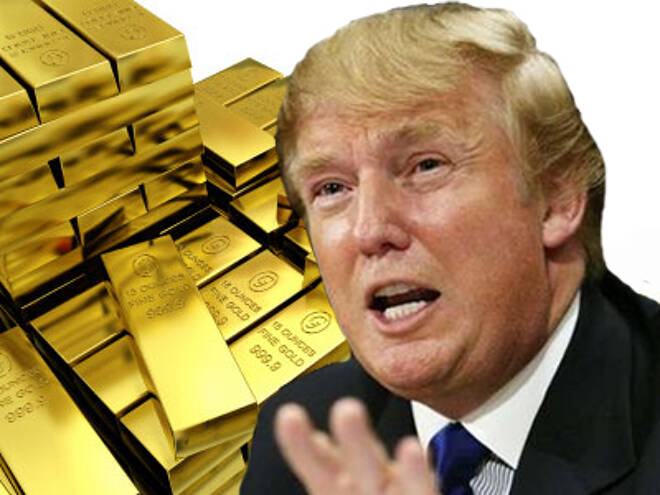Advertisement
Advertisement
Gold Loves Donald Trump
By:
An interesting article printed by Marketwatch about politics in the US and gold prices reports that as election time heats up there will be many
An interesting article printed by Marketwatch about politics in the US and gold prices reports that as election time heats up there will be many headlines. The notion that stocks are enjoying a Donald Trump–inspired rally doesn’t pass the sniff test. Gold, however, might be another matter, if the Republican nominee ends up winning the White House, analysts say.
Trump’s pledge to tear up trade agreements and a rise in overall uncertainty over the policy outlook would likely dent the U.S. economy while spurring a rise in demand for gold, said Georgette Boele, a currency and precious-metals analyst at ABN Amro, in a Friday note.
To be sure, Boele’s forecast is based on highly pessimistic expectations in regard to Trump’s likely economic policies.
“If Trump were to become president, gold prices will likely perform well, because we expect that his policies will be inward looking and will weaken the fundamentals of the U.S. economy,” Boele said. “In addition, his rhetoric and possibly policy actions could create domestic and international uncertainty at best, and upheaval at worst.”
There has been much talk this week about how global economies haven’t been impacted by last month’s Brexit vote as much as previously thought, with the Bank of England stating that there was no clear evidence suggesting an immediate downturn in the country’s economy.
This wasn’t the news gold bugs had been hoping for, as gold tends to rally in more volatile, uncertain markets.
Gold saw another weekly decline falling 0.34% for the week and closing at 1322.00 but held on to most of year to date gains up by 24.68%. Silver was hit harder falling 2.20% to end at 19.963 although silver is outperforming on a YTD basis up by 42.60% as its industrial demands help keep it strong. This week precious metals are facing two major stumbling blocks which come on Wednesday and Friday as the Federal Reserve meeting concludes first and is followed by the Bank of Japan. In addition Europe stress testing will be published on Friday.
Although the Feds are not expected to make any changes, traders will be closely monitoring working in their statement as the US economy has turned stronger and Brexit has now moved on. If we look at gold’s behavior in the past month, it hit a high around July 8, about two weeks after the Brexit.
On Tuesday, the precious yellow metal gained a bit more. It opened at $1,332 but closed that trading day flat. The fact that gold prices had strength early in the week is not terribly surprising. The strength of the dollar bled into the gold market, pushing gold prices down over the next couple of days.
That became especially obvious on Wednesday. That’s when gold sold off in early morning trading to open way down at $1,318. Most of the damage had been done, and it appears the strength in the DXY started to sink in. By the time of the close, gold prices had weakened a bit further to $1,315.
While gold lovers believe prices will only go higher from here, others say a rally will only last if central-bank actions boost inflation, which has historically been positive for the yellow metal. Higher rates lift the opportunity cost of holding non-yielding assets such as bullion, while supporting the dollar, in which gold is priced. But others argue that a sustained rally may require current geopolitical tension and economic worries to stay in place. In the past week, however, concerns over economic stability have largely eased and risk appetite among investors has increased.
About the Author
Barry Normanauthor
Latest news and analysis
Advertisement
